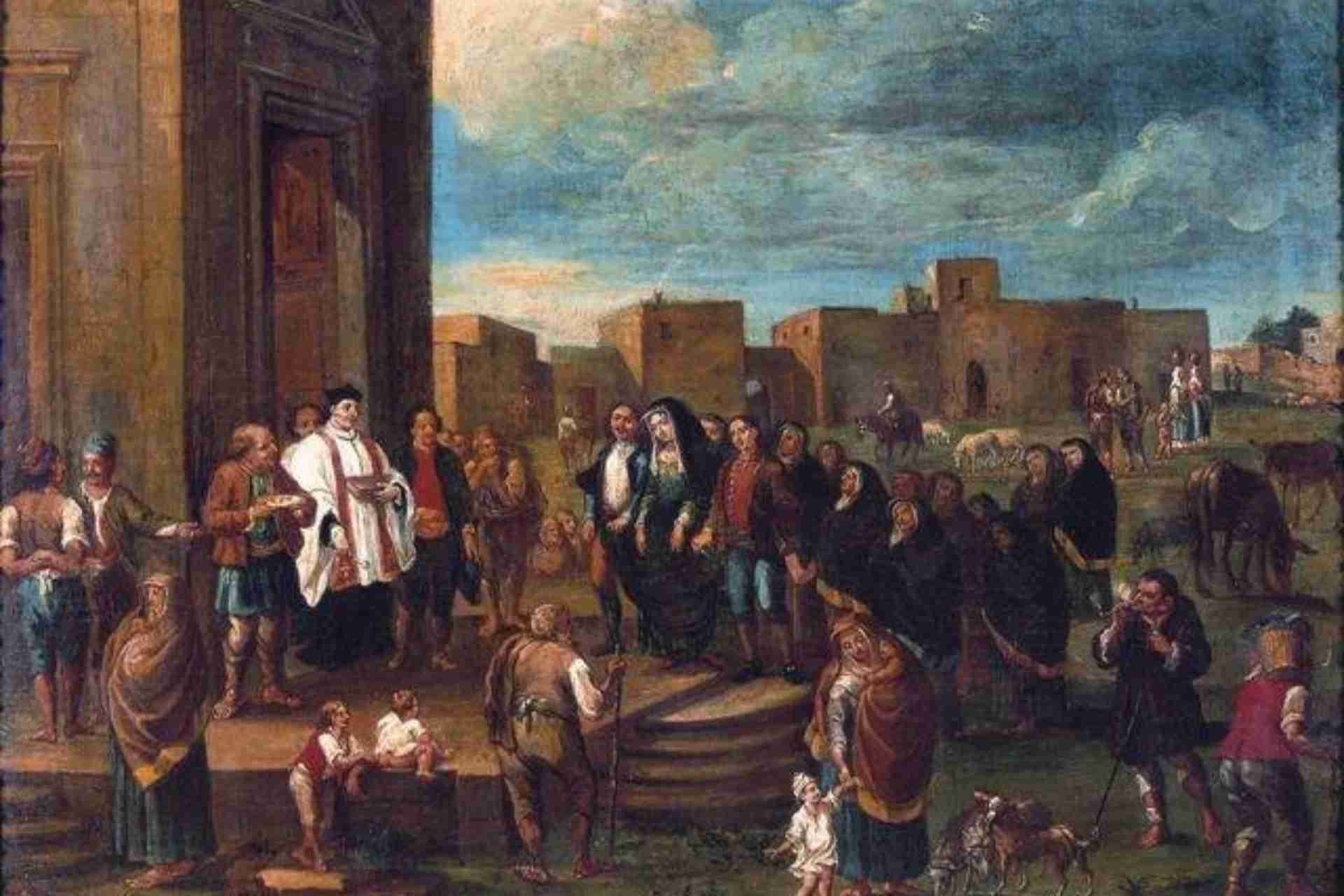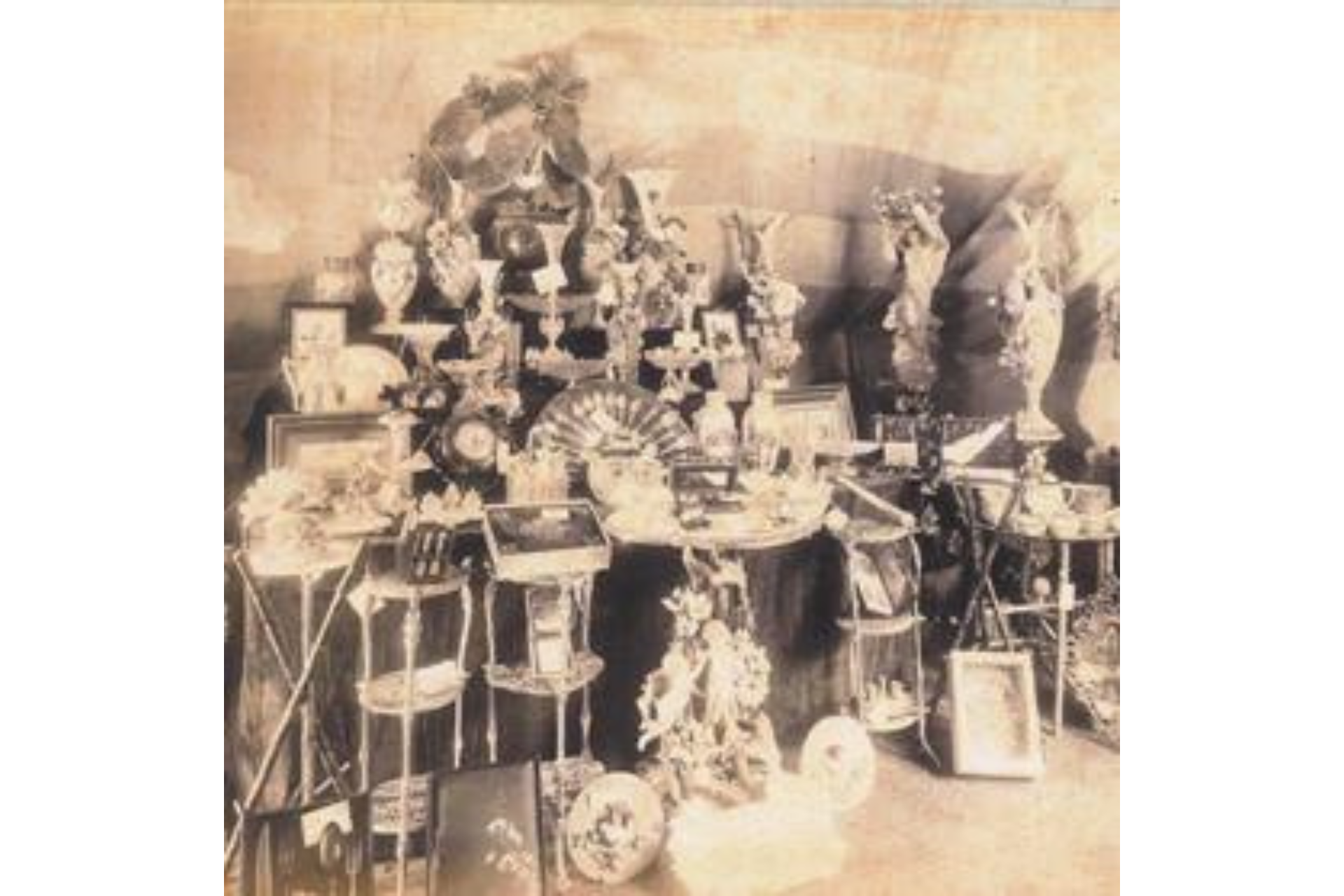It-Tieg Malti: Remembering The Beauty Of Traditional Maltese Weddings
by Chiara Micallef

Parents started planning for their daughter's marriage as soon as she was born. Houses had a stone shelf called a ħarrieġa constructed in one of the upper floor's street-facing windows before the 17th century.
The ħarrieġa's purpose was to hold a rose or carnation plant placed by the daughter when she was of marriageable age. It was endowed by her parents and she was responsible for its survival. The girl was instructed to care for the plant and water it regularly so that any interested young men could catch a glimpse of her.
Although arranged marriages were not unheard of, it was more typical for young people to choose their future spouses.
Men would sport a rose or carnation behind one of their ears to show they were available. If a bachelor spotted a girl he favoured while walking by her house, he would merely flash her a smile, a mutually interested girl would toss a flower or leaf from her plant as a cue. The man would typically hold onto this keepsake as a promise that he would visit the girl again.
The man would come up with different schemes to meet the girl in person, be it at mass or while she was running errands, as daughters weren't typically allowed out of the home. Her mother would be the perfect abettor in orchestrating a strategic plan for her daughter to meet and wed her future husband – in fact, it was even said that the man would need to woo the mother rather than the daughter. The young man would go a step further to charm the girl out of her dwelling, by paying an għannej – or even a whole troupe of musicians – to serenade the girl.
Il-Ħuttaba
If the interested man was timid or did not feel comfortable making his intentions known, he would skip the entire display and speak directly to a ħuttaba. These professional matchmakers would serve as intermediaries between the parents and the potential groom and precipitously engineer the whole marriage process to take place for a hefty sum.
While young people might have taken a fancy to one another, the final decision on whether the marriage would take place or not was ultimately made by the bride's parents. If her parents did not approve of the groom or his family, the union would not take place. This dialogue typically took place behind closed doors, and the bride was expected to heed her parents' advice. If their guidance was rejected, she would be granted neither her dowry nor her parents' blessings. Before welcoming the spouse into their brood, the potential bride's parents would uncover as much as they can about him and his family – their social standing, any conditions and financial status.
Ir-Rabta
During the engagement period, ir-rabta, the prospective mates weren't allowed to meet in private but they were at least fortunate enough to meet under stringent supervision. Other not-so-lucky couples had to count on the ħuttaba to pass messages to their lovers.
The bride-to-be's parents would invite the groom's parents over for dinner to discuss the wedding date and the dowry. As sewing was a common craft, part of the dowry was sheets and linen the bride would have embellished with lace or needlework.
Before the meeting, the mother would instruct her daughter on how to behave around her prospective husband. The mother would dab honey on her daughter's lips so that she could speak sweetly to her future spouse. This also functioned as a reminder to the young lovers not to risk stealing a kiss, as the smudged honey would expose them.
Both families would wear their finest attire for the meeting – particularly if the parish priest and extended family were invited to the event. The groom gifted the family with two fresh fish. It was typical for him to hide a golden ring in the fish's mouth as a keepsake for the bride. If fish were not available, the groom would fashion a bunch of dried figs in the form of a fish, as it was believed that fish symbolised wealth and prosperity. The bride would in exchange, give the groom an embroidered handkerchief.
Il-Kitba
On the eve of the wedding, the bride and groom would meet at the bride's residence along with the village notary to write up their marriage contract, known as il-kitba. In this document, the bride's parents would list their dowry, including any property, money, clothing, animals and furnishings gifted to their daughter. From his end, the groom listed down his belongings to ensure that the newlyweds had enough resources to start their life together. As part of the contract, the husband vowed to take the bride to her favourite feast – this was generally l-Imnarja, San Girgor or San Gwann.
Il-Libsa
The għonnella was a staple component of the wedding outfit up until the 1940s when it was superseded by the Western white dresses we recognise today. The Maltese bride modelled a captivating black or wine-coloured gown for her wedding. While it may seem an unconventional choice nowadays, dark-coloured attire was chosen for this event as dark pigments were wildly costly at the time, making these garments a luxury for most.
Il-Ġilwa
On the day, generally a Sunday or a public holiday, the ħaddara (guests) would all meet at the bride's home in their best clothing. With them, the ħaddara brought an assortment of food that would be consumed throughout the feast. Favoured options were fish, meat and game. The bride's relatives supplied the wine, perlini and the beloved ġelat Malti.
The bridal party ambled for the parish church in full pageantry – if the bride came from a poor family, this procession was financed either by a local fraternity or the Knights of Saint John.
The procession was initiated by an incense holder, scenting the streets in anticipation of the lovely bride. He would be followed by għannejja and musicians, tracked by a provincial poet reciting verses with one or more men holding a basket over their heads. The baskets would contain a miscellany of decorative ribbons, crosses and qagħaq hanging from them. These would be loaded with confections and saint figurines, sheathed with a cloth to keep flies from spoiling the food. After the ceremony, these would be distributed to the attendees as mementoes.
Il-Purċissjoni
The bride and her father finally followed the procession and walked underneath a lavish elaborately ornate canopy known as il-baldakkin, which was held up by close family friends and relatives. The use of the baldakkin was outlawed in the mid-seventeenth century when the Archbishop confined its use to sacramental processions and canonical figures. Finally, the bridal party would be joined by the groom and his ħaddara, more musicians and għannejja.
Iċ-Ċerimonja
Upon arrival at the church, the party was greeted with the sound of tolling bells and organ notes. It was customary for an organ to be playing as it was believed that without it, the marriage would be doomed. The priest would be waiting for the couple at the altar to recite the wedding rites in Latin. The newlyweds didn't always fully comprehend what was being dictated, but they would respond in a pidginised Italian/Latin mixture.
When the rite was through, the priest would be endowed with a hamper of sorts loaded with wine, sweets, pickled fare and further homemade delicacies. Afterwards, the procession celebrating the newlyweds headed to the bride's family home. The bride and groom were now allowed to walk together under the baldakkin, and when they arrived back at the bride's family home, family members would throw wheat, rice and money at them to bring forth wealth and happiness.
It-Tieġ
The groom and guests would sit together for the feast, while the bride dined solitarily in her room. Once everyone was done eating, the bride would join the party for drinks, where the groom would pour the first glass for her – she would take the first sip and he would finish it off for her. If the bride requested a dance, the husband would have to oblige, along with all the guests. In some villages around Malta, rather than dancing, the bride and groom would resort to għana.
The ħaddara would present their gifts to the bride, which generally included gold, silver and money.

After the wedding celebrations are over, the guests, the groom, and his family leave the bride's house. The groom returns to his childhood home, and the bride stays at her parent's home until it is time for her to reunite with her husband.
Il-Ħarġa
After eight days at her parents' house being coached on how to live a married life, the bride would prepare for il-ħarġa – a custom signifying her leaving the home to start a new life with her husband. The bride and groom would dine at his parents' home with both sets of parents. Afterwards, the newlyweds would head to their new home where the bride would walk in first – this was to signify that she was her husband's equal, and not his property.
While honeymoons abroad weren't yet a thing, it was signed in the kitba that the groom was obliged to take his bride to the Mnarja, San Girgor or San Gwann during their first year of marriage. The bride would usually attend the feast wearing her wedding dress and għonnella for good luck.



